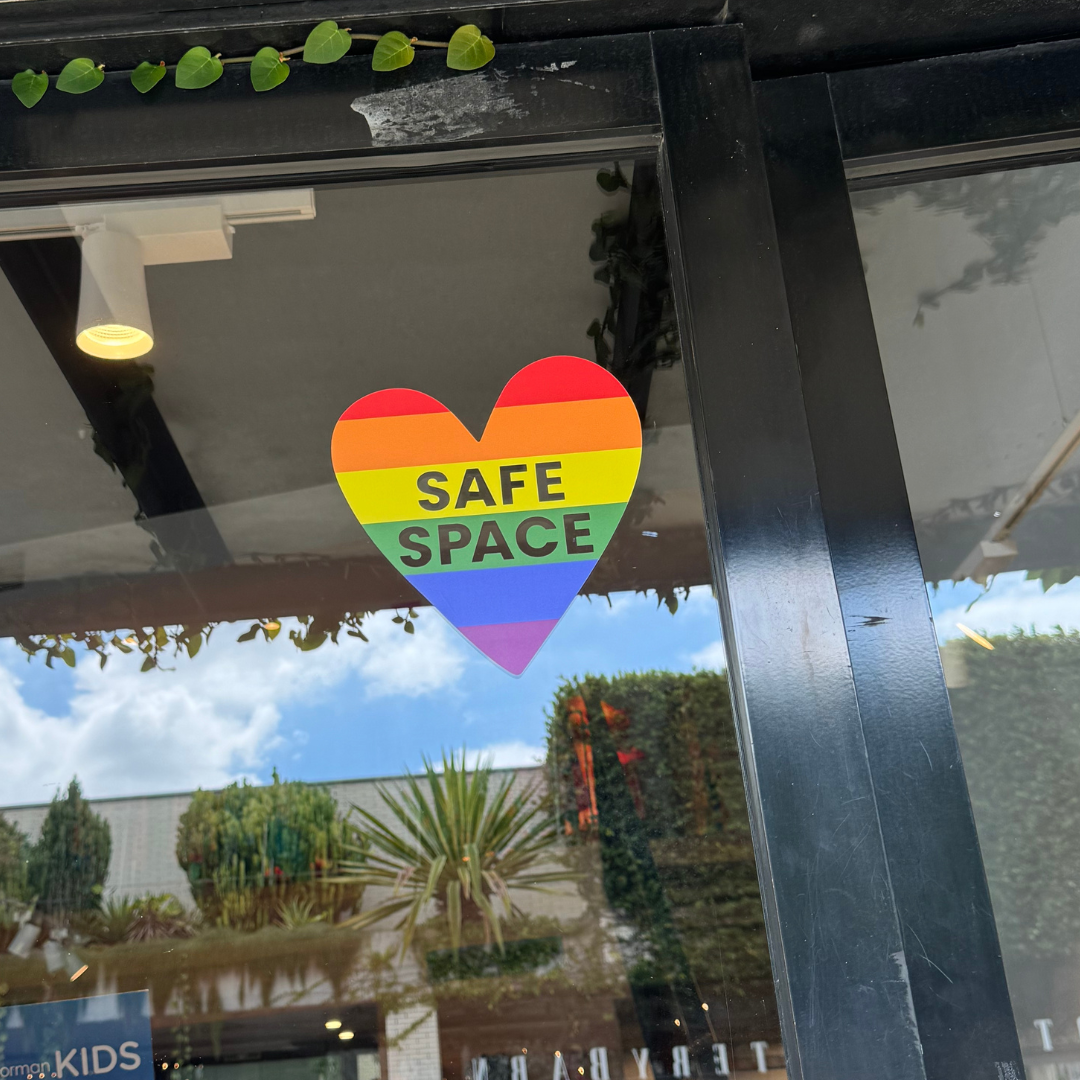In part two of this series we will explore the internal dimensions of diversity.
This is likely the more familiar definition of diversity in the workplace.
And the one which is perhaps the most problematic.
Last week, we saw this play out in the UK with Sam Kerr’s incident.
One which has raised a substantial amount of commentary and will likely remain a hot topic.
Where we fit in as clinic owners is hopefully a little bit simpler.
The diversity that we encourage within our own workforce.
I introduced this model in last week’s piece (Diversity is unconditional love of the big 5 personalities).

What is Internal diversity?
By definition within the Gardenswartz & Rowe model, internal diversity includes:
- Age
- Race
- Gender
- Ethnicity
- Physical Ability
- Sexual Orientation
To illustrate, I’m going to rewind about 5 years to my first few hires.
We’ll have a look at my former team and the good and, not so good, aspects we were able to establish.
We didn’t specifically go out to hire anyone in particular.
We weren’t looking for any particular race, religion, ethnicity or physical ability.
Basically I needed a physio or an admin.
I was looking to hire predominantly based on age however.
My bias was towards a young team for a few reasons.
They would grow with the practice.
And perhaps be more mouldable in the short term.
But also, a cheaper and more accessible option to get our business up and running.
Internal diversity isn’t that easy to establish
This is where physiotherapy can get a bit complicated.
The majority of applicants are young physiotherapists, for obvious reasons.
They are usually fresh out of uni, where the largest market of job seekers are.
Physiotherapist working hours are also geared this way however.
We often need staff for multiple evenings per week, plus occasional weekends.
A lot of our practices just aren’t built to suit everyone.
The hours we work substantially erode the applicant pool.
Now, more than ever before.
Ironically too, as Gen Z are apparently a 24:7 culture.
Yet many also want to work reasonably fixed business hours.
Rightly or wrongly, this is a problem in our sector.
It is geared heavily towards young staff but it’s starting to break down even further.
And, the advantage young staff have gets eroded quickly.
Within 5-10 years, most transition to becoming parents.
Or, they simply don’t want to work late evenings so frequently.

Female staff can be hard to find
I would have loved to start with a female therapist as my first hire.
But it took over 18 months to attract a single female applicant.
Let alone get to our first female hire, a new grad.
This is in spite of the fact that two thirds of our profession are female.
I think this is the double-edged sword of having a lot of all-female businesses.
They tend to create an aspiration point for many practitioners.
Sub-specialities such as women’s health for example.
This unfortunately dilutes the pool of experienced females working in standard practices.
Highly sought after physio’s who can manage more difficult clients.
A similar challenge facing female GP’s, in that female physiotherapists often manage far more complex caseloads.
I used to pay for separate mentoring for my female staff because I’d frequently get questions that were outside my scope of practice.
Such are the challenges sometimes of suburban private practice.
Yet healthcare itself often pushes against diversity.
Towards specialisation, towards homogeneity.
My team of diverse backgrounds
My team was considerably diverse from day dot.
Starting with myself, an Australian of Sri Lankan heritage.
As well as our first physiotherapist who was born in Singapore.
Then we had an Aussie male as our third.
So initially three men, diverse backgrounds.
And then our first female finally joined, and was very busy.
Subsequently we hired 3 more over the next 12 months.
We ended up with staff from many Asian backgrounds.
Including Chinese, Vietnamese, Indian and Filipino.
We were a culturally diverse group, heavily swayed towards South-East Asian.
But that is more than likely a reflection of our city and locality as well.
The West of Melbourne.
Hiring for internal diversity
Through this process of hiring people from diverse backgrounds.
We began to attract more staff from diverse backgrounds.
It creates a forward feedback loop.
Because it speaks to safety for those from diverse backgrounds.
They too see, in somewhat black and white terms, what many may overlook.
That organisations which lack ethnic and racial diversity can be intimidating.
And safety at work is the most paramount thing one would want.
A feeling of being safe to be yourself.
And an environment where one is safe to learn and grow at their own pace.
I’ve never feared being an outsider
I’ve never really been one to subscribe to said beliefs.
But I also have never considered myself anything other than Australian.
And that is a fairly common thought process for first generation Aussies.
We want to take on all the Australian-isms, especially the bad words.
And the colloquialisms.
We assimilate into the culture.
One wouldn’t be able to tell easily on the phone that Shane doesn’t have blond hair and bowl leg spin.
A client literally told me this one day in Dandenong.
Working in Australia vs Overseas
One of the most staggering differences I noticed when I moved to the UK however was this.
That in the UK, my heritage was not often pointed out to me.
People over there accepted that I was Australian.
They understood that I had an Australian accent.
And they were quite quick to want to discuss all things Aussie, especially the cricket.
When they were winning…
However, back home, it is actually the other way around.
When you don’t look Australian, people assume you are a foreigner.
They ask questions like, ‘yeah… but where are you REALLY from?’…
Quirky, to say the least I’d say, Aussies are far more direct.
Whilst the UK has a British-Indian prime minister; it still has it’s problems too.
Creating organisations that offer internal diversity
We ought to ensure that we are creating organisations that are diverse.
Across an even wider range of internal dimensions than just race, ethnicity and gender.
And that’s not something you can do overnight.
At the end of the day, you can only hire from the pool of applicants you receive.
…Or is there more to it?
The key characteristics once again:
- Age
- Gender
- Ethnicity/Race
- Sexual Orientation
- Physical ability
Welcoming internal diversity
There are small but significant things that your clinic can do today to welcome diversity in.
Small things, like creating safe spaces for people of different sexual orientations.

These small gestures tend to be invisible to most people.
Except those at the polar extremes.
The haters see them, and hate them.
And those that matter, it matters to them big-time.
The LGBTIQA+ community values this greatly.
As any other human would value being acknowledged.
Similarly, establishing accessible practices goes a long way to addressing the needs of your own patients.
Let alone potential staff who would also appreciate this.
Everyone NEEDS to be seen.
To have a voice.
And when we present our organisations outwardly in such a fashion.
It invites people in.
Whether that be patients, staff or just friendly well wishers.
We can always do more to invite internal diversity into our clinics.
Preventing discrimination
Lastly, the flip side is we have to be vigilant about discrimination.
We have to constantly look at ourselves in the mirror.
Even now, I’m aware that I’ve not given enough emphasis in this article to sexual orientation for example.
And I’ve barely touched on the topic of physical ability.
These too, are extremely important parts of internal diversity.
They are both areas I have had little first hand experience with as an employer.
But I would love for anyone who does, to comment on this post.
Or to reach out to me directly if they prefer.
As this isn’t the last conversation we’ll be having, that’s for sure.
Meanwhile.
Let’s ask the real key question:
Are we discriminating against anyone in particular?
My failed attempt
This is what I realised the day I failed to hire a female physiotherapist with 2 children.
I couldn’t offer her an idyllic work-life balance.
Not with zero experience in private practice.
And being new to the area as well!
I knew we would have been setting her up to fail, as I’d literally tried previously.
A part timer, 3 mornings per week, and it was a disaster.
The hard part in our industry is the dualistic challenge.
Getting clinical skills up to scratch.
Whilst building out commercial sustainability.
It’s very hard if you start from a place of limited hours to grow a caseload.
Even though she had a decent CV and previous leadership.
It was a shame.
But room space and patient availability only allow what they allow sometimes…
Equal is never equal
There is a reality that we can’t have equal standards of work.
ie. Everyone has to do 2 evenings and a Saturday.
That’s not really accepting of the various needs of all staff.
Setting blanket rules encourages homogeneity.
That’s essentially where discrimination begins.
It starts slowly and builds through complicated rules and scheduling.
The inconvenient truth
Just as I asserted last year around physiotherapist working hours.
I think we need to have this conversation too.
If I were to start a clinic today I’d do it very differently.
I’d pull back the hours to be much closer to 9-5.
I’d endeavour to make it accessible for all people to fully engage in their work.
As well as establishing policies to ensure we didn’t discriminate:
On age, gender, ethnicity, race, sexual orientation or physical abilities.
And here’s why.
The awesome power of internal diversity
We had some fantastic staff in our admin team.
Some were Mum’s that did only do mornings for us.
And there were frustrations from the younger staff who had to do a few more evenings at times.
But, we made it work.
And, because we made this work.
When we did find ourselves short every now and again.
It was often the Mum’s who would pull strings, call in favours.
Stretch their day a little deeper.
And support the business that supported them.
The more you give… the more you get.





